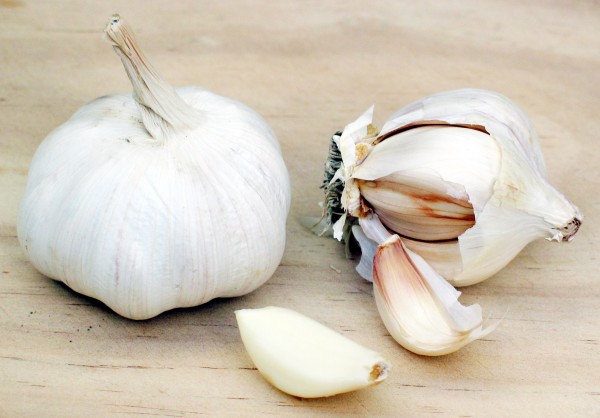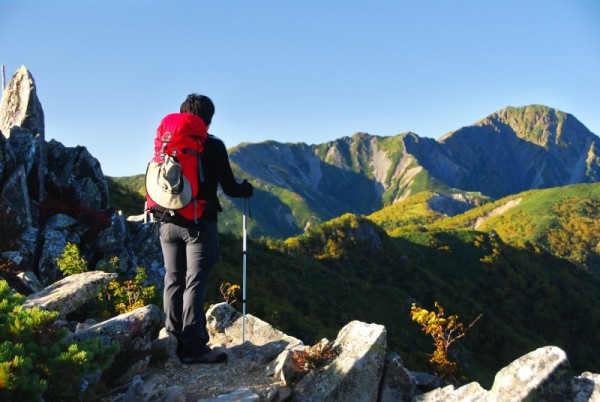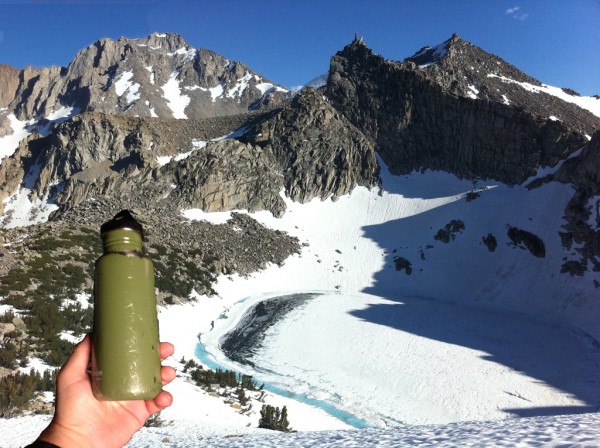1. Eat lots of garlic
When planning to venture at high altitude, try consuming as much garlic as possible for a few days before departure. Your boyfriend might not appreciate it (note: I am not taking personal responsibility for break-ups ensuing application of this particular piece of advice), but your body will: high garlic consumption seems to help multiply red blood cells, which physically prepares you to the lack of oxygen.
Not a huge garlic fan? Most mountain town pharmacies sell garlic pills (pastillas de ajo), which you can just swallow to avoid the taste. Take one every 8 hours with a glass of water during your stay (according to the pharmacist in Humahuaca).
When planning to venture at high altitude, try consuming as much garlic as possible for a few days before departure. Your boyfriend might not appreciate it (note: I am not taking personal responsibility for break-ups ensuing application of this particular piece of advice), but your body will: high garlic consumption seems to help multiply red blood cells, which physically prepares you to the lack of oxygen.
Not a huge garlic fan? Most mountain town pharmacies sell garlic pills (pastillas de ajo), which you can just swallow to avoid the taste. Take one every 8 hours with a glass of water during your stay (according to the pharmacist in Humahuaca).

I also remember reading in a book about Peru that taking Arnica homeopathic pills for a few days before facing the altitude helped your body handle it. I have no scientific evidence to back this, but it is always good to carry some with you anyway, as they help relieve the pain of blows and bruises (yes, it is likely that you will fall over or bump into a rock at some point or another while playing in the mountain).
2. Go up p-r-o-g-r-e-s-s-i-v-e-l-y
After 3 000 meters, it is recommended not to go up more than 400 meters a day to give your body time to adjust. I actually drove from Tilcara (2 465 m) to the highest point of the spectacular Road 52 which leads to Chile (4 170 m) in one afternoon – but got so exhausted after my two-minute walk at the top that I fell sound asleep as soon as I got back into the car (no, I wasn’t the one behind the wheel).
If the symptoms you experience are very acute, the only solution is to go back down until they stop. Mountain sickness affects everyone differently: give yourself time to adapt to this new environment!
After 3 000 meters, it is recommended not to go up more than 400 meters a day to give your body time to adjust. I actually drove from Tilcara (2 465 m) to the highest point of the spectacular Road 52 which leads to Chile (4 170 m) in one afternoon – but got so exhausted after my two-minute walk at the top that I fell sound asleep as soon as I got back into the car (no, I wasn’t the one behind the wheel).
If the symptoms you experience are very acute, the only solution is to go back down until they stop. Mountain sickness affects everyone differently: give yourself time to adapt to this new environment!
3. Don’t run!
Your inner travel junkie might have trouble refraining for jumping with excitement or pulling a victory dance every time you discover somewhere new. Up high in the mountain though, you might have to pace your overactive self! During the first few days, you will feel like you lost your stamina: routine activities such as going up the stairs or simply carrying your bag will leave you short of breath. I learnt this one the hard way, after pretty much running up a hill jumping on rocks in excitement to discover the view – which turned out extremely enjoyable, but the nosebleed that followed was not.
Your inner travel junkie might have trouble refraining for jumping with excitement or pulling a victory dance every time you discover somewhere new. Up high in the mountain though, you might have to pace your overactive self! During the first few days, you will feel like you lost your stamina: routine activities such as going up the stairs or simply carrying your bag will leave you short of breath. I learnt this one the hard way, after pretty much running up a hill jumping on rocks in excitement to discover the view – which turned out extremely enjoyable, but the nosebleed that followed was not.
 photo by i, cjw
photo by i, cjw
Oh, and you know the annoying dizziness you usually get when getting up too quickly? Well, multiply it by about fifty and you’ll get an idea of what it will do to you at 4 000 meters of altitude (yes, it pretty much feels like the whole world is collapsing around you while you get sucked into a giant vortex). Take a few more seconds to get up and you’ll be fine!
4. Give up your bad habits
“No smoking! No drinking!”, said the Argentinian pharmacist, intensely frowning in disapprobation and repeatedly mimicking the gestures to make sure I understood. Well, I can assure you – based on empirical research – that a glass of wine (or two) with dinner will not harm you. Besides, it would be a crime to miss out on Argentina’s intensely aromatic Malbecs and delicate Chardonnays. Yet avoid finishing the bottle of rum/pisco/tequila at 5 am and passing out on the floor if you have planned to go walking/climbing/horse-riding in the morning…
“No smoking! No drinking!”, said the Argentinian pharmacist, intensely frowning in disapprobation and repeatedly mimicking the gestures to make sure I understood. Well, I can assure you – based on empirical research – that a glass of wine (or two) with dinner will not harm you. Besides, it would be a crime to miss out on Argentina’s intensely aromatic Malbecs and delicate Chardonnays. Yet avoid finishing the bottle of rum/pisco/tequila at 5 am and passing out on the floor if you have planned to go walking/climbing/horse-riding in the morning…
5. Stay hydrated
A common cause of feeling sick in the mountains actually turns out to be dehydration. This is a sneaky one, as you often won’t feel thirsty due to the climate! Make sure you drink plenty of water throughout the day, thirsty or not thirsty, and always carry a (full) bottle with you whenever you go for a walk.
A common cause of feeling sick in the mountains actually turns out to be dehydration. This is a sneaky one, as you often won’t feel thirsty due to the climate! Make sure you drink plenty of water throughout the day, thirsty or not thirsty, and always carry a (full) bottle with you whenever you go for a walk.
 photo by the Muir project
photo by the Muir project
I usually loathe headgear of all sorts (unless we’re talking about a blue wig or a pirate hat and I’m attending a festival), but it is absolutely necessary to wear a hat when going for a long walk in the Andes: at this height, you’re much closer to the sun! Don’t forget to also wear sunglasses and sunscreen.
6. Try the local remedy
Mostly grown in Bolivia, Peru and Columbia, coca leaves are an effective way to prevent soroche. Yes, coca leaves, the ones which, chemically transformed, turn into cocaine. Unaltered, though, they are a medicinal herb which characteristics amaze scientists: people here say that it possesses as much as 170 different properties – including heightening physical resistance, facilitating digestion and preventing tooth decay. Used by Indians in South America for over 5 000 years, it is perfectly legal and commonly consumed here. Don’t try to bring coca leaves back home, though: in most Western countries, it is considered a base product for cocaine and is strictly illegal.
Mostly grown in Bolivia, Peru and Columbia, coca leaves are an effective way to prevent soroche. Yes, coca leaves, the ones which, chemically transformed, turn into cocaine. Unaltered, though, they are a medicinal herb which characteristics amaze scientists: people here say that it possesses as much as 170 different properties – including heightening physical resistance, facilitating digestion and preventing tooth decay. Used by Indians in South America for over 5 000 years, it is perfectly legal and commonly consumed here. Don’t try to bring coca leaves back home, though: in most Western countries, it is considered a base product for cocaine and is strictly illegal.
 photo by Viva Latin America
photo by Viva Latin America
Among its many benefits, la coca helps taming mountain sickness by favouring blood oxygenation. You will easily find coca leaves at local markets or shops, for a very reasonable price: I paid 5 pesos argentinos (about 1 US$) for a medium-size bag in Salta.
You can simply chew the leaves, but coca pretty much tastes like grass. If you don’t have the soul of a ruminant, put a few leaves into your mouth and form a small ball; then stick this DIY chewing-gum on one side of your mouth, between your gum and your cheek, and just leave it there. With both methods, the aim is to extract the “juice” contained in the leaf to allow it to be absorbed by your body! When the leaves are out of juice, spit them out. I saw a Quechua Indian progressively insert a good thirty leaves into his mouth, ending up with what looked like a ping-pong ball stuck inside his cheek! I personally went for six or seven.
However, my favourite method to extract the benefits of the coca is hacer in tecito (to make a tea): it tastes delicious and, what’s more, keeps you hydrated! Put a few leaves in a big thermos of hot water with a bit of azúcar (sugar), and take it with you when you go for a walk! I really did feel that it relieved shortness of breath during the five-hour hike I did in Huacalera.
You can simply chew the leaves, but coca pretty much tastes like grass. If you don’t have the soul of a ruminant, put a few leaves into your mouth and form a small ball; then stick this DIY chewing-gum on one side of your mouth, between your gum and your cheek, and just leave it there. With both methods, the aim is to extract the “juice” contained in the leaf to allow it to be absorbed by your body! When the leaves are out of juice, spit them out. I saw a Quechua Indian progressively insert a good thirty leaves into his mouth, ending up with what looked like a ping-pong ball stuck inside his cheek! I personally went for six or seven.
However, my favourite method to extract the benefits of the coca is hacer in tecito (to make a tea): it tastes delicious and, what’s more, keeps you hydrated! Put a few leaves in a big thermos of hot water with a bit of azúcar (sugar), and take it with you when you go for a walk! I really did feel that it relieved shortness of breath during the five-hour hike I did in Huacalera.
7. Always carry aspirin
All of the previous tips will help prevent mountain sickness, but even if you strictly apply them you might sometimes feel like your brain is hammering against the inside part of your skull. This might happen when you least expect it, so be sure to carry aspirin (or ibuprofen) with you at all times.
What follows is not exactly mountain sickness-related, but on your list of things-to-carry-with-you-at-all-times-in-the-Andes, be sure to also add tweezers. Locals say that you won’t understand the spirit of the Andes until you fall into a cactus… Well, believe me: at the climax of intense spiritual connection with the mountains, you’ll be happy you brought a thorn-removing device with you.
All of the previous tips will help prevent mountain sickness, but even if you strictly apply them you might sometimes feel like your brain is hammering against the inside part of your skull. This might happen when you least expect it, so be sure to carry aspirin (or ibuprofen) with you at all times.
What follows is not exactly mountain sickness-related, but on your list of things-to-carry-with-you-at-all-times-in-the-Andes, be sure to also add tweezers. Locals say that you won’t understand the spirit of the Andes until you fall into a cactus… Well, believe me: at the climax of intense spiritual connection with the mountains, you’ll be happy you brought a thorn-removing device with you.
Taken from:
http://www.travelettes.net/a-guide-to-getting-high-surviving-the-altitude/


No comments:
Post a Comment